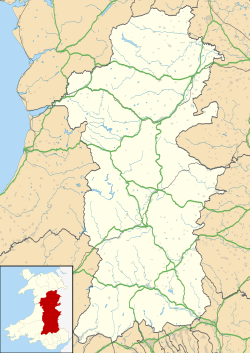| Pen-y-Bont-Fawr | |
|---|---|
| Village and community | |
 The Railway Inn | |
Location within Powys | |
| Principal area | |
| Country | Wales |
| Sovereign state | United Kingdom |
| Police | Dyfed-Powys |
| Fire | Mid and West Wales |
| Ambulance | Welsh |
Pen-y-Bont-Fawr (or Penybontfawr [1] ) is a small village and community in the Tanat valley in Montgomeryshire, Powys, Wales. In the 2011 UK Census it had a population of 440 with 58% born in England and 39% in Wales (many nearby hospitals are in England). [2]
It is in the electoral ward of Llanwddyn.
St Thomas's Church was built in 1855 in the Victorian Gothic style. It is a Grade II listed building. [3]
Robert Ellis (1812–1875), bardic name Cynddelw, was a Welsh language poet, editor and lexicographer, He was born nearby at Tyn y Meini, Bryndreiniog.
Penybontfawr railway station was on the Tanat Valley Light Railway. The station opened in 1904 and closed in 1951.


